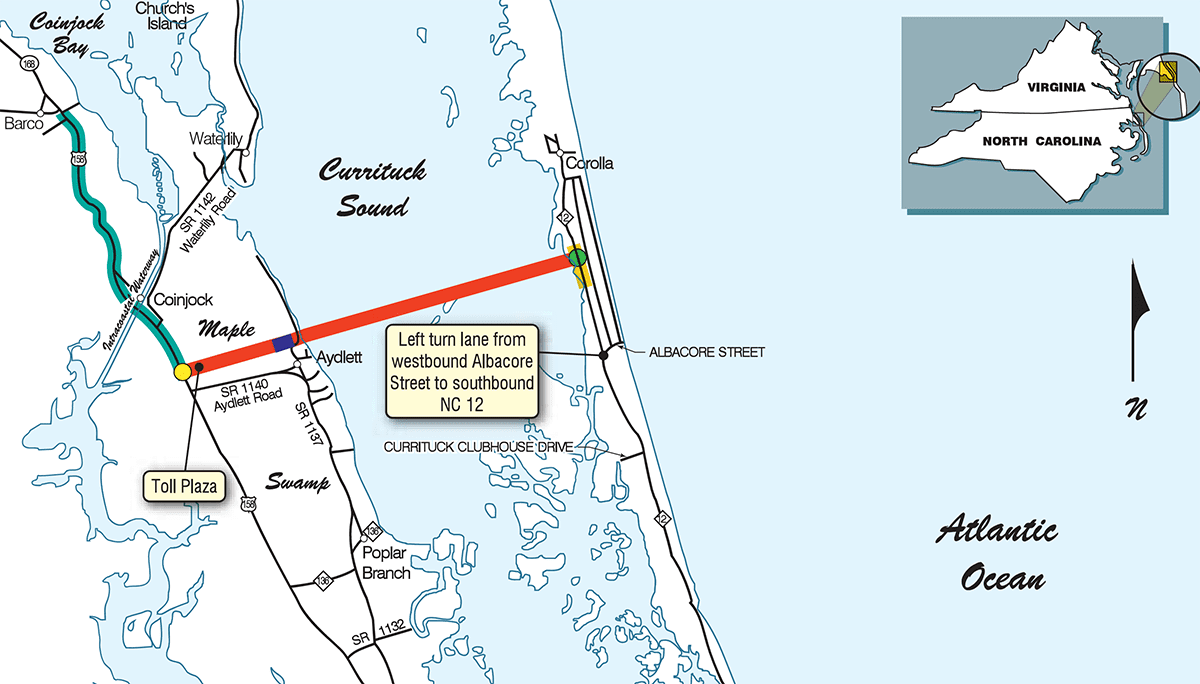
The North Carolina Division of Coastal Management has issued a permit for the proposed mid-Currituck bridge that would connect mainland Currituck County and its barrier island beaches.
The North Carolina Department of Environmental Quality on Friday announced that the division had issued a Coastal Area Management Act dredge and fill law permit and that, in a separate action, the agency’s Division of Water Resources had issued a Clean Water Act Section 401 water quality certification for the toll road and 6.7-mile-long bridge.
Supporter Spotlight
The project will connect the mainland at U.S. Highway 158 near Aydlett to the Outer Banks near Corolla with two-lane bridges spanning the Currituck Sound and Maple Swamp.
As previously reported in Coastal Review, the project has received wide support from Dare and Currituck counties and most Dare towns, though residents of Currituck County communities on either side of the bridge have expressed concerns about the impacts of more traffic on the neighborhoods’ infrastructure, environment and quality of life.
The N.C. Department of Transportation/North Carolina Turnpike Authority submitted the CAMA permit application one year ago. The Division of Coastal Management accepted the application as complete early this year.
CAMA Major/dredge and fill law permits must be obtained for projects that cover more than 20 acres, include activities that require other state or federal permits, or for construction covering more than 60,000 square feet.
Clean Water Act Section 401 water quality certification determines whether a project complies with state water quality standards.
Supporter Spotlight
The Division of Water Resources issued a certification for the project with conditions, which include an agreement to offset unavoidable impacts to wetlands by creating, restoring or enhancing wetlands elsewhere from the construction area.
The applicants are also required to mitigate unavoidable impacts to submerged aquatic vegetation by monitoring for the effects of shading and replacing or restoring impacted vegetation as close to the area as possible.
“The certification also includes a condition that the applicant must submit an update to the project stormwater management plan prior to construction,” according to an NCDEQ release.







